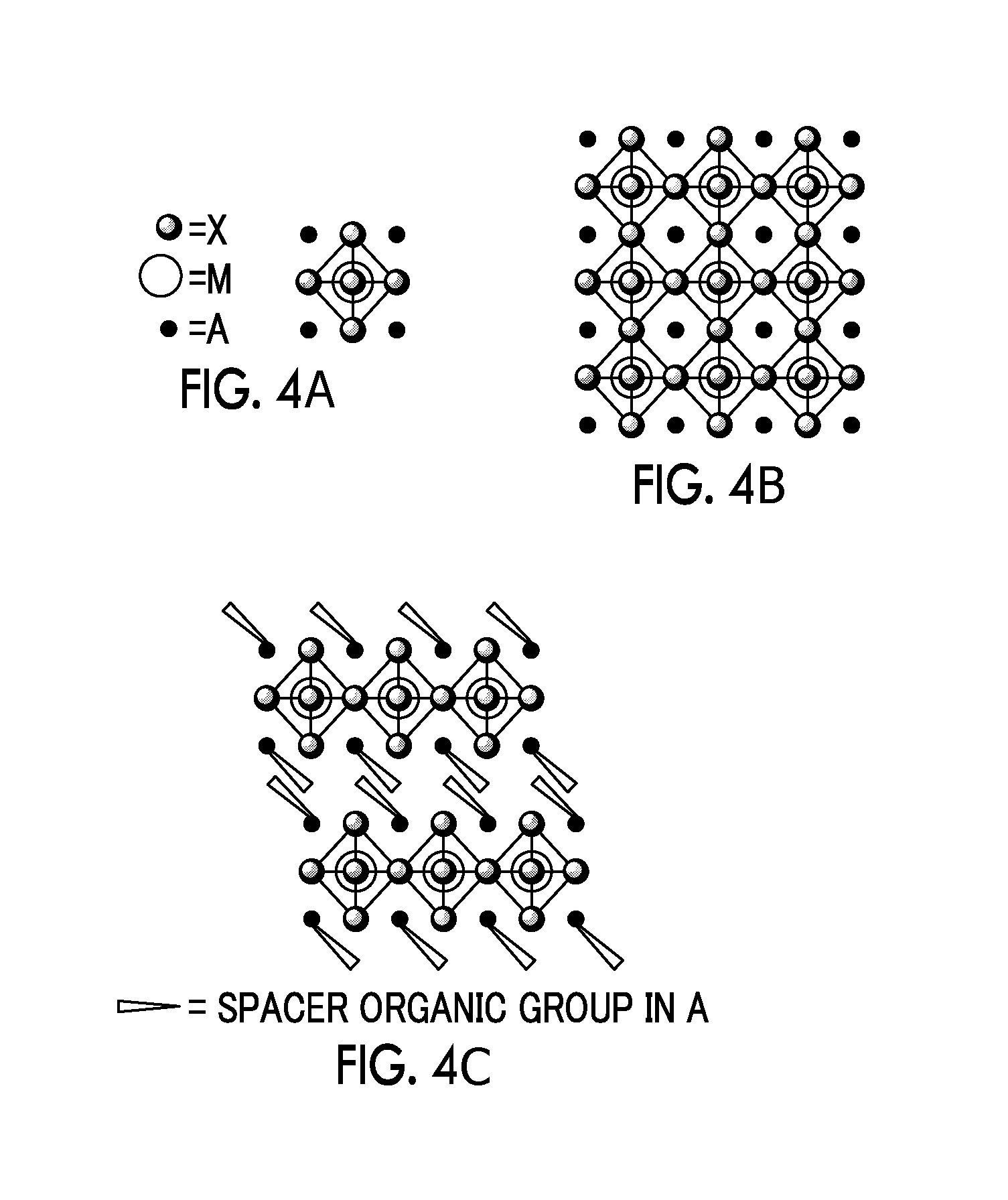Photoelectric conversion element and solar cell
- Summary
- Abstract
- Description
- Claims
- Application Information
AI Technical Summary
Benefits of technology
Problems solved by technology
Method used
Image
Examples
example 1
[0246]Solar cells were manufactured using a light absorber containing the above-described perovskite compound (P1), and the fluctuation in the photoelectric conversion efficiency was evaluated.
[0247](Manufacturing of Photoelectric Conversion Element and Solar Cell (Sample No. 101))
[0248]A photoelectric conversion element 10 and a solar cell of the invention were manufactured according to the following procedures.
[0249]14>
[0250]A 15 mass % isopropanol solution of titanium diisopropoxide bis(acetylacetonato) (manufactured by Sigma-Aldrich Co. LLC.) was diluted with 1-butanol to prepare a 0.02 M solution for a blocking layer.
[0251]A fluorine-doped, conductive SnO2 film (transparent electrode 11b) was formed on a glass substrate (support 11a, thickness: 2.2 mm) to produce a conductive support 11. Using the prepared 0.02 M solution for a blocking layer, a blocking layer 14 (thickness: 50 nm) was formed on the conductive SnO2 film at 450° C. through a spray pyrolysis method.
[0252]12>
[0253...
example 2
[0303]Solar cells were manufactured using a light absorber containing the above-described perovskite compound (P′), and the fluctuation in the photoelectric conversion efficiency was evaluated.
[0304](Manufacturing of Photoelectric Conversion Element and Solar Cell (Sample No. 201))
[0305]A photoelectric conversion element and a solar cell of the invention (Sample No. 201) were manufactured in the same manner as in the manufacturing of the photoelectric conversion element and the solar cell (Sample No. 101), except that in the manufacturing of the photoelectric conversion element and the solar cell (Sample No. 101), the following light absorber solution E was used in place of the light absorber solution A.
[0306]The photosensitive layer of the manufactured photoelectric conversion element and solar cell contained a perovskite compound (PB1) having a perovskite crystal structure with CH3CH2—NH3+ as a cation A1, (Pb2+0.99Sn2+0.01) as a metal cation, and I− as an anion X and represented b...
example 3
[0319]Solar cells were manufactured using a light absorber containing the above-described perovskite compound (P2), and the fluctuation in the photoelectric conversion efficiency was evaluated.
[0320](Manufacturing of Photoelectric Conversion Element and Solar Cell (Sample No. 301))
[0321]A photoelectric conversion element and a solar cell of the invention (Sample No. 301) were manufactured in the same manner as in the manufacturing of the photoelectric conversion element and the solar cell (Sample No. 101), except that in the manufacturing of the photoelectric conversion element and the solar cell (Sample No. 101), the following light absorber solution F was used in place of the light absorber solution A.
[0322]The photosensitive layer of the photoelectric conversion element and the solar cell contained a compound (PB2) having a perovskite crystal structure represented by (CF3CH2—NH3)2PbI4 with CF3CH2—NH3+ as a cation A2, Pb2+ as a metal cation, and I− as an anion X.
[0323]
[0324]The li...
PUM
 Login to View More
Login to View More Abstract
Description
Claims
Application Information
 Login to View More
Login to View More - R&D
- Intellectual Property
- Life Sciences
- Materials
- Tech Scout
- Unparalleled Data Quality
- Higher Quality Content
- 60% Fewer Hallucinations
Browse by: Latest US Patents, China's latest patents, Technical Efficacy Thesaurus, Application Domain, Technology Topic, Popular Technical Reports.
© 2025 PatSnap. All rights reserved.Legal|Privacy policy|Modern Slavery Act Transparency Statement|Sitemap|About US| Contact US: help@patsnap.com



